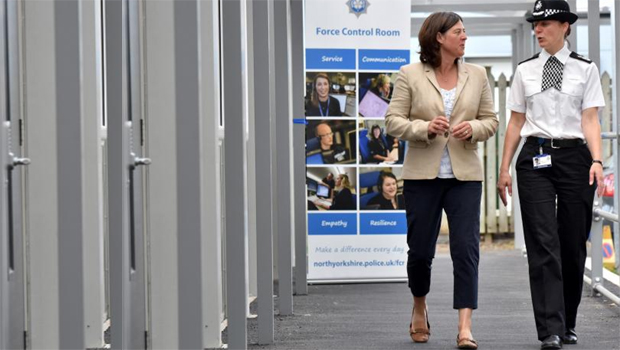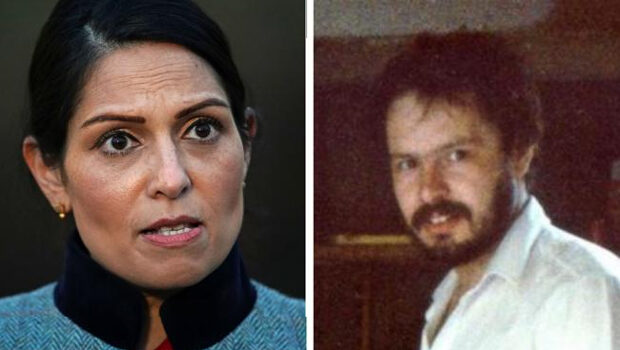Met. Police, NYP and Corruption Investigations
by TIM HICKS
~~~~~
Introduction
Daniel Morgan (pictured above right) was a private investigator who was found murdered in a car park in Sydenham South London in 1987. There were six investigations into Mr Morgan’s murder, all of which failed to produce a conviction. It was alleged that police corruption had played a part in his murder and prevented his killers being convicted.
To address public concern over this, in 2013, the Home Secretary Priti Patel (pictured above left) set up the Daniel Morgan Independent Panel (DMIP).
The DMIP published its report last year. It found that in recent years the force concealed its own failings to protect its reputation over its bungled and corrupted investigation into the unsolved murder of Mr Morgan:
“Concealing or denying failings, for the sake of the organisation’s public image, is dishonesty on the part of the organisation for reputational benefit and constitutes a form of institutional corruption.”
Following on from this alarming conclusion, Her Majesty’s Inspectorate of Constabulary, Fire & Rescue Services has published a report on the Metropolitan Police approach to corruption investigations. Its press release is below and it is deeply concerning:
Metropolitan Police approach to corruption not fit for purpose
The Metropolitan Police Service’s approach to tackling police corruption is not fit for purpose, the police inspectorate has said.
Her Majesty’s Inspectorate of Constabulary and Fire & Rescue Services (HMICFRS) found that the Met had not learned all the lessons from its failed investigation into the 1987 murder of private investigator Daniel Morgan, which was hampered by police corruption.
Despite these findings, HMICFRS acknowledged that the Met’s capability to investigate the most serious corruption allegations is particularly impressive, and other police forces regularly call on their expertise.
The inspectorate praised the Met’s confidential reporting line and its dedicated team to support whistle-blowers. It also recognised that the Met had greatly reduced the number of personnel who were not security vetted.
However, the inspectorate’s overall finding was that the Met’s counter-corruption arrangements and procedures are fundamentally flawed. For example:
-
- in the past two years, the Met has recruited people with criminal connections and more than 100 people who have committed offences. Some of these recruitment decisions may have been justifiable, but the force failed to properly supervise these people to lessen the risks;
- property and exhibits procedures were dire. Hundreds of items were not accounted for, including cash and drugs. In one instance, the security access code for a property store had been inscribed on the outside of the door;
- the force doesn’t know whether all those in sensitive posts – such as child protection, major crime investigation, and informant handling – have been cleared to the level of security vetting needed;
- over 2,000 warrant cards issued to personnel who had since left the force were unaccounted for; and
- the Met still does not have the capability to proactively monitor its IT systems, despite repeated warnings from the inspectorate. IT monitoring is used by most forces to enhance their ability to identify corrupt personnel.
Her Majesty’s Inspector of Constabulary Matt Parr said:
“It is unacceptable that 35 years after Daniel Morgan’s murder, the Metropolitan Police has not done enough to ensure its failings from that investigation cannot be repeated. In fact, we found no evidence that someone, somewhere, had adopted the view that this must never happen again. This will be understandably distressing for Mr Morgan’s family and friends, to whom we send our condolences.
We found substantial weaknesses in the Met’s approach to tackling police corruption. From failing to properly supervise police officers who have previously committed offences, to inadequate vetting procedures, and much more besides, it is clear that the current arrangements are not fit for purpose.
We have made several recommendations for change. If public confidence in the Metropolitan Police is to be improved, they should be among the Commissioner’s highest priorities.”
The inspectorate said it found no evidence of any deliberate or coordinated attempts by the Met to frustrate the work of the Daniel Morgan Independent Panel. It said that although there was much to criticise, based on this inspection it would not describe the Met as institutionally corrupt.”
The report can be read in full here
The Metropolitan Police response to the HMICFRS Report can be read here.
The Daniel Morgan murder will have a huge impact on British Policing. Both the above documents are well worth reading for those of our readers that are senior Police Officers or aspire to senior officer rank.
The North Yorkshire Police (NYP) approach to corruption investigations
So could these issues exist in NYP?
To find out, I wrote to Chief Constable Winward and Police, Fire & Crime Commissioner Metcalfe (the person charged withholding the Police to account) asking them
“Please can I ask for a media statement from one or both of you on the issues raised by HMICFRS as they apply to NYP.”
My intention being to give them the opportunity of issuing a reassuring statement to the NYE’s readership that all is well and that NYP is not afflicted with the same issues as the Met.
Their response was silence.
The only conclusion I can draw from this is that both Chief Constable Wiinward and Commissioner Metcalfe know that NYP has the same issues as the Met, but they do not want to admit it to the NYE’s readership. If this is so, it is a serious weakness and a failure of management.
The 2018 HMICFRS inspection of NYP revealed that like the Met, NYP did not have the capability to monitor its IT systems for use by corrupt officers to analyse personal data for predatory purposes:
“The force doesn’t have the capability to monitor all IT systems and the data contained within them. As a result, there are gaps in coverage. Recent extra capacity in the professional standards integrity unit is enabling the force to develop proactive processes to look for corruption linked to abuse of position for a sexual purpose by analysing data. But this is in its initial stages. The force should take steps to make sure that data is protected and effective monitoring of technology can take place.”
This means that any predatory Police Officer or member of staff can access information through the Force computer system and use it to target vulnerable adults and children. A catastrophic failure of NYP information security that could leave children vulnerable, despite warnings from HMICFRS since at least 2016.

The former Police, Fire & Crime Commissioner Julia Mulligan, seen here with Chief Constable Lisa Winward outside the Force Control Room. Spent hundreds of thousands of pounds on legal fees to prosecute journalists and for the Chief Constable to travel all over Europe on FBI alumni junkets, but did not improve the security on police computers, thereby leaving children at risk.
Police intelligence on corrupt Officers
The HMICFRS Report is highly illuminating on corruption related-intelligence:
Sources of corruption-related intelligence
The Metropolitan Police Service obtains corruption-related intelligence from a wide range of sources.
These include a significant number of reports raised by the workforce through confidential methods of reporting. Other methods of receiving intelligence include: line managers; colleagues directly reporting concerns; investigations into serious and organised crime; other law enforcement agencies and from members of the public.
However, almost all the cases we saw involved the force reacting to items of intelligence that had been referred to the Directorate of Professional Standards. We believe the MPS is missing opportunities to proactively gather corruption-related intelligence.
In my experience, the same is true of NYP. Some examples:
- Hundreds of complaints were made about paedophile, rapist and Mayor of Scarborough Peter Jaconelli and his accomplice Jimmy Savile. But none of the intelligence on them was stored on the force computer records.
- Deputy Chief Constable Sue Cross ignored evidence of horrific child abuse by Savile and Jaconelli, to conceal multiple offences of misconduct by police officers that knew what was going on and did nothing. A classic example of “Concealing or denying failings, for the sake of the organisation’s public image, is dishonesty on the part of the organisation for reputational benefit and constitutes a form of institutional corruption.” When this was exposed by the NYE Team on the BBC, neither Cross or any of the police officers in Scarborough at the time who covered up for Savile will have had any entry made against them in corruption-related intelligence.
- Both the Chief Constable and the Police Fire and Crime Commissioner follow a policy of ignoring information received from the NYE’s readership and its journalists.
- Recently the NYE ran a series of articles exposing misconduct by Police Officers abusing their powers as Police Officers during the Coronavirus pandemic -a corrupt act. The Chief Constable refused to take any action against them and I am quite sure no entry has been made in the Force’s corruption-related intelligence systems.

- The NYE has exposed cases of misconduct by senor Police Officers involving police funds, which the Chief Constable has ignored. Again I am quite sure no entry has been made in the force’s corruption-related intelligence systems.
Police Officers have a duty to challenge and report improper conduct by their colleagues under the College of Policing Code of Ethics requirements for:
- Honesty and Integrity generally.
- Challenging and Reporting Improper Conduct.
But these fine sentiments have all been ignored by the Chief Constable.
Conclusion
In the report Her Majesty’s Inspector of Constabulary Matt Parr observed incisively that:
“The Met’s apparent tolerance of these shortcomings suggests a degree of indifference to the risk of corruption.”
This is the NYE’s experience of NYP over the past eleven years.
It appears that the same issues of failure of management, low prioritisation of child abuse, refusal to work with the media, failure of intelligence and refusal to prosecute any investigation that could result in any form of criticism of NYP still prevail in NYP.



























Comments are closed.